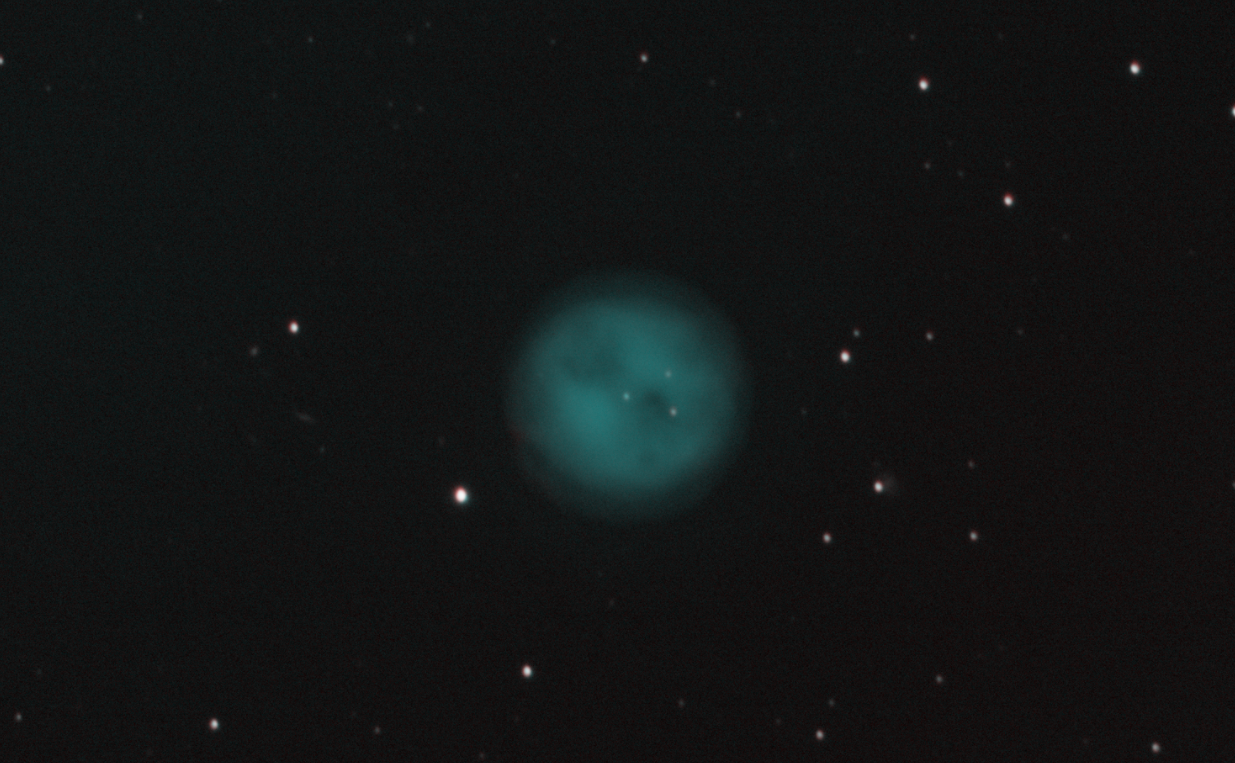Despite challenges with focus on my Schmidt Cassegrain telescope I do occasionally get a decent image! Here’s the Owl with 1500s of Ha and 7500s of OIII (HOO) using a Celestron C8 and ASI183MM Pro camera on 02/29/2024. M97, known as the The Owl Nebula, is located in the bottom of the bowl of the Big Dipper.
From Wikipedia:
The Owl Nebula (also known as Messier 97, M97 or NGC 3587) is a planetary nebula approximately 2,030 light years away in the constellation Ursa Major. Estimated to be about 8,000 years old, it is approximately circular in cross-section with a faint internal structure. It was formed from the outflow of material from the stellar wind of the central star as it evolved along the asymptotic giant branch. The nebula is arranged in three concentric shells, with the outermost shell being about 20–30% larger than the inner shell. The owl-like appearance of the nebula is the result of an inner shell that is not circularly symmetric, but instead forms a barrel-like structure aligned at an angle of 45° to the line of sight.
The nebula holds about 0.13 solar masses (M☉) of matter, including hydrogen, helium, nitrogen, oxygen, and sulfur;[5] all with a density of less than 100 particles per cubic centimeter. Its outer radius is around 0.91 ly (0.28 pc) and it is expanding with velocities in the range of 27–39 km/s into the surrounding interstellar medium.
The 14th-magnitude central star has passed the turning point in its evolution and is condensing to form a white dwarf. It has 55–60% of a solar mass, is 41 to 148 times solar luminosity (L☉),[5] and has an effective temperature of 123,000 K. The star has been successfully resolved by the Spitzer Space Telescope as a point source that does not show the infrared excess characteristic of a circumstellar disk.
